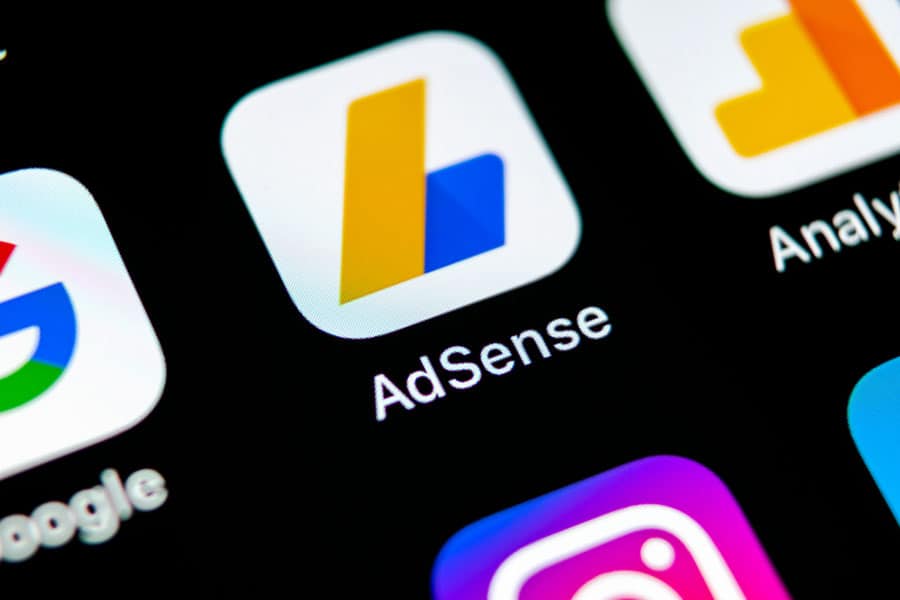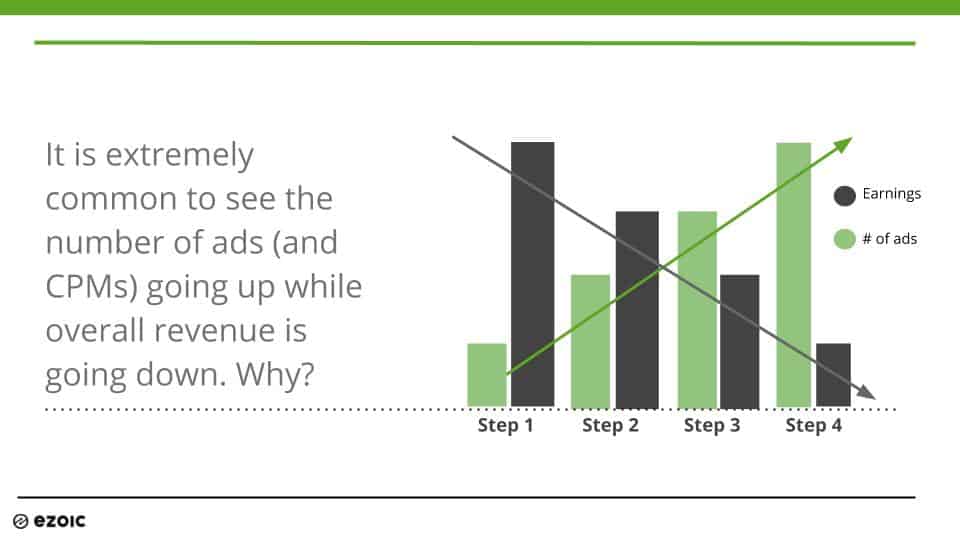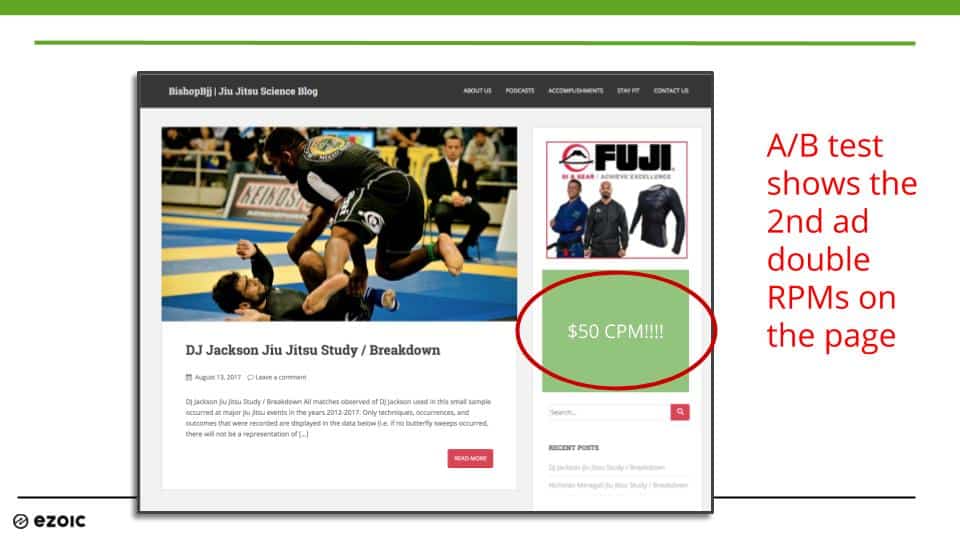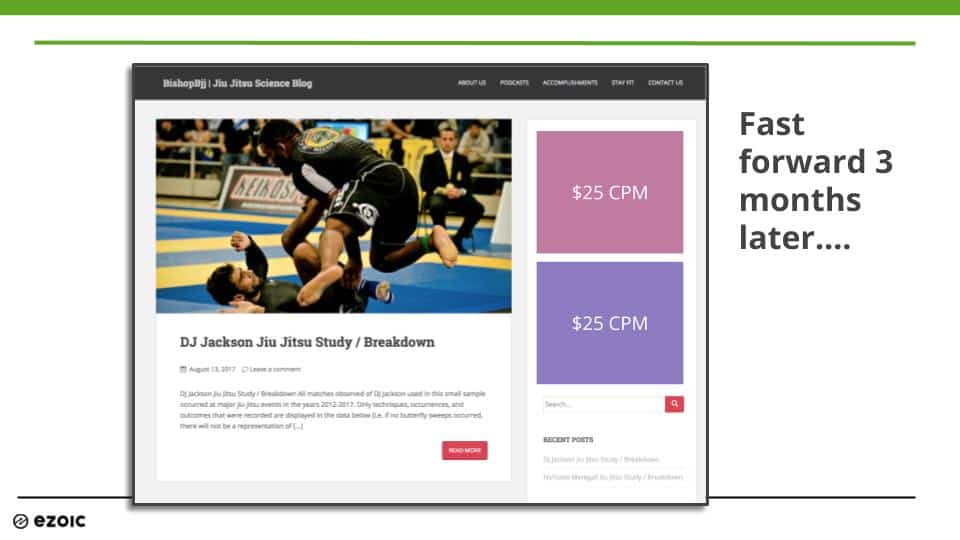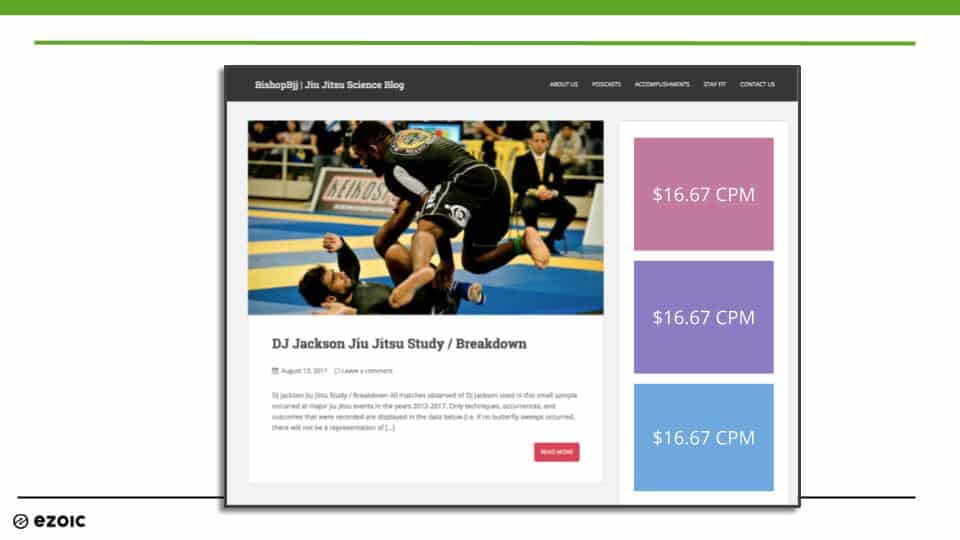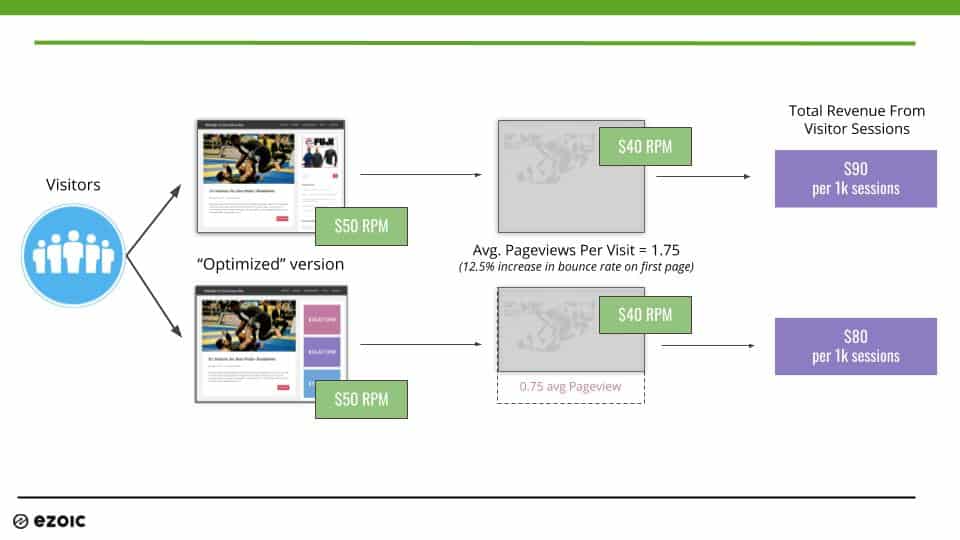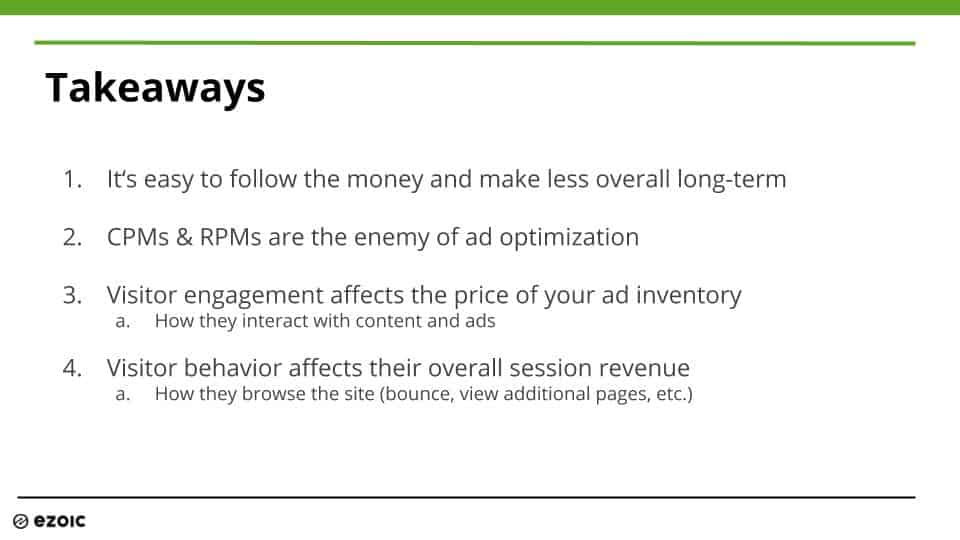Why Just AB Testing AdSense Ads Can Actually Lower Ad Rates
It makes sense that if you’re a digital publisher that leverages AdSense that you might want to test various ad locations and ad sizes to see which ones yield the best results. While stuffing a bunch of ads on the page can surely harm reader experiences, there is always a nice balance that can be found between revenue and visitor engagement.
Below, I explain why A/B testing AdSense ads will often lead even the most experienced ad ops professionals in the wrong direction. Short-term ad earnings optimizations often have negative consequences down the line; especially if you’re unaware of how ad density might be affecting things like pageviews per visit.
Check out the video, or see my brief cliff notes in the text underneath. I’ll explain how to avoid this and ensure that you improve AdSense ad earnings when running tests.
Watch ‘Ezoic Explains’: How A/ B Testing AdSense Ads Works
What’s the worst-case scenario?
More ads, less revenue. Yikes! We don’t want that.
It is common that when publishers test ads, the number of ads and CPMs (cost per mille, or thousand) increase and revenue decrease over time. But why is this?
By showing more ads, you could be providing visitors with a progressively worse experience, which overall makes less revenue. Advertisers use data from the real-time bidding protocol inside of DFP or Google Ads to know what to bid on ad inventory.
This data is based on the historical value of the ad space on the publisher’s website, so as the value of the space changes, advertisers will adjust their bids automatically. This happens if CTR, viewability, or conversions change over time.
An Example of where things go wrong?
Simplified Example: An advertiser of martial arts uniforms wants to sell their product for at least $100 to make a profit and wants to advertise on a jiu-jitsu website. The 300×250 sidebar ad on the jiu-jitsu website has an average CTR that fit the campaigns conversion goals.
The advertiser can bid a $50 CPM because they can meet their campaign goal at this rate. The publisher then sees the ad is making a $50 CPM and decides to A/B test another AdSense ad in the sidebar to see if they can take advantage of this high ad rate.
The publisher will likely see RPMs (revenue per mille) increasing, but since advertisers buy inventory based on historical data, advertisers will start to adjust their bids based on the performance of ads over time.
Initially, they will bid $50 on the ad, but after a few months, they will start bidding less because their CTR will be diluted by the additional ad.
…However, the publisher will have already seen the results of A/B testing AdSense ads in that location and deemed the test successful because of the increase in RPMs.
Now, let’s pretend that the CTR of the ad is now half of what it was because there are two ads diluting each other.
Now each ad is only worth $25 to the same advertiser. This is because the bidding criteria will automatically help advertisers adjust bids so that they meet campaign goals; which in this case is that the advertiser can turn a profit in exchange for their bids.
The publisher may then decide to run another A/B test on the AdSense ads in the sidebar by adding a 3rd ad to see if that will help revenue like it did that last time before rates slipped.
The advertiser will initially bid another $25 CPM because that is the historical value of that space. But over time, CTR will decrease again as the ads all dilute each other and they will start bidding less because they are not meeting their campaign goals now. Now, the ads in the sidebar are only worth $16.67. They have equally diluted each other (it is not always this clean, but often works this way).
Unfortunately, this is a very common practice. By the time a publisher deems an A/B test on AdSense ads as successful, they likely haven’t seen the long-term consequences of their tests yet.
Often, the tests that produce more revenue in the short-term can have negative long-term consequences.
Review of Example
- Identified a page with a high CPM
- Attempted to increase RPMs on that page through a/b testing
- Saw ad value drop, and added more ads
- Ended with the same RPM as when they started
- Displaying 3x as many ads, making the same amount of money
This fundamentally why you see so many sites overloaded with things like autoplay video, native ads, and more. The tests will always point ad operations pro’s towards more ads unless you look at the data long-term and how all ads dilute each other.
How to avoid bad A/B tests with AdSense
If you aren’t considering things like bounce rate and pageviews per visit when you’re serving ads to your visitors, you’re missing out on one of the most important things, which is session revenue (or EPMV). More about why it’s important here.
RPMs and CPMs are terrible at telling you how much you’re actually going to make from your visitors because they do not account for if a visitor visits multiple pages or is negatively impacted by the ads themselves.
If a visitor bounces because the ads on a page are annoying, you may make less money on that person than if they see fewer ads on a page and then visit multiple pages, which would also have a few ads.
If you’re showing three times as many ads and you’re making the same RPM, or even a slightly higher RPM, but your visitors are visiting fewer pages, you’re making less revenue over time because the ad density is causing a higher bounce rate.
This doesn’t mean you show less or more ads — or avoid testing on your website; it means that you shouldn’t just do A/B testing to see which one makes more money in the form of CPMs or RPMs.
You should be running tests to see what maximizes total session revenue. Look at landing pages that produce the sessions with the most revenue.
More ads will usually equal more revenue initially, but it is not the smartest way to approach A/B testing AdSense ads. There is always a balance, and surprisingly, for many visitors, the threshold is very high; however, it’s knowing when it is better to show fewer ads on a page to elongate a session to maximize total visit revenue that really provides the biggest opportunity to grow ad earnings.
If you’d like to run experiments that account for this type of behavior automatically you can try Ezoic’s free Ad Tester application. Ad Tester leverages machines to find the right balance of all ad inventory across multiple visitors all at once by running millions of different tests that are easy to set up.

